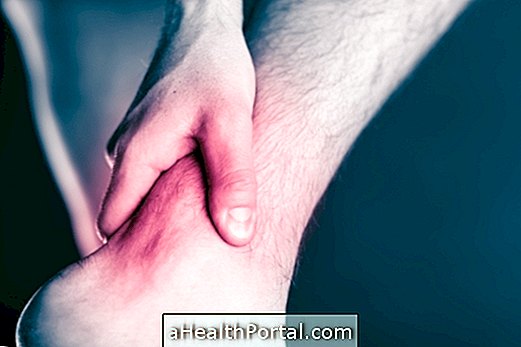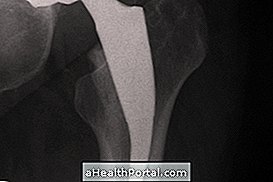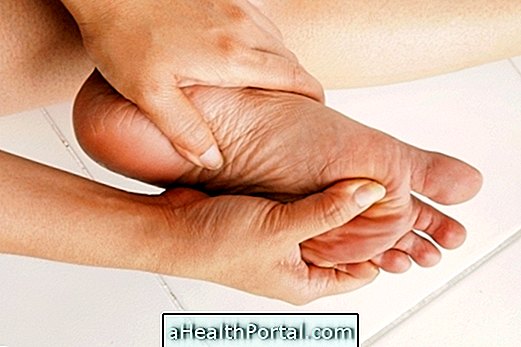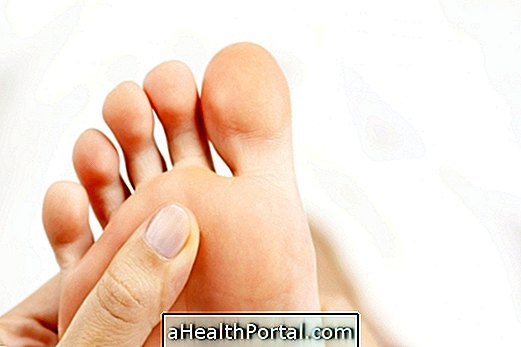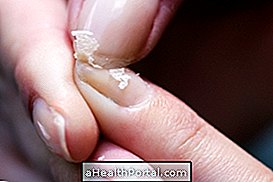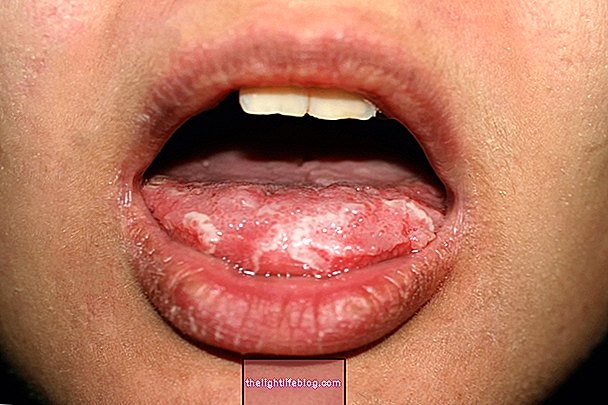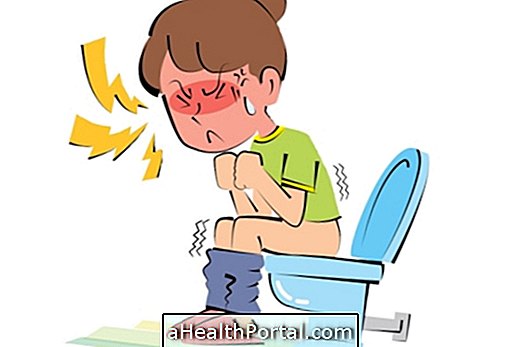The treatment for muscular distension, which consists of a rupture of the tendon that connects the muscle to the bone, or very close to the tendon, can be done by applying ice within the first 48 hours after injury and rest, and may require the use of splints or crutches, for example.
As soon as possible, physiotherapy should be started so that rehabilitation can be performed and the muscle can be restored while maintaining quality of life, but initially the physician can prescribe analgesic and anti-inflammatory drugs to reduce pain, discomfort, facilitating the healing of the lesion.
Remedies for muscle strain
The indicated medicines are anti-inflammatories, like Ibuprofen, under medical guidance. Passing the Arnica or Cataflan ointment on the spot, besides reducing the pain, decreases the inflammation, being a good option to complement the treatment.
Physiotherapy for muscle strain

Physiotherapy sessions to rehabilitate a muscle strain should be done daily or every other day to facilitate recovery. The treatment should be indicated personally by the physiotherapist after an evaluation and observation of the tests requested by the doctor and may include the use of ice packs or heat, depending on the need, and the use of devices such as tens, ultrasound and laser, for example.
Ice and rest
In the first 48 hours after injury it is recommended to apply an ice pack for 20 minutes, 3 to 4 times a day. It is important to cover the ice with a gauze, diaper or thin cloth to protect the skin from burns. It is also important to keep the affected joint higher than the rest of the body. So that the legs are affected, you can put ice and lie down with a cushion under the legs so that the swelling subsides.
In the first 6 days after the injury, it is not recommended to do any type of effort and therefore you should choose not to train and not force the joint, keeping it in rest. It may be useful to bandage the region with gauze or use a splint, and when the lesion is on the legs, walking with crutches may be indicated.
See the video below for more details:

Physiotherapy and massage equipment
At the beginning of each session the physiotherapist can indicate the use of devices such as tens, ultrasound or laser, using the appropriate parameters to decrease pain and inflammation, aiding in the healing of the wound. Muscle relaxation massage is indicated to deflate and promote muscle emptying, bringing relief from pain and symptoms, but it can also help fight the muscle contraction that sets in.
Stretching and strengthening exercises
Stretching exercises should only be performed after 1 week of rest, being careful not to increase the pain. Initially it is more appropriate for the physiotherapist to stretch the affected muscle for 30 seconds to 1 minute, repeating at least 3 times. Muscle strengthening can only be started when the pain is minimal and initially it is recommended that it be isometric contractions, where the movement of the joints is not observed, only the muscular contraction.
With the improvement of the symptoms the exercises can progress, with use of elastic bands and the following weights. In the last phase of treatment, joint stability exercises such as proprioception should be performed. Here are some examples.

Signs that may indicate excessive exercise
Some signs that may indicate that the treatment is being very intense, which can also harm the recovery of the injury, are:
- Pain after physical therapy that does not decrease in 4 hours or does not go away in 24 hours;
- Pain that starts earlier than in the previous session;
- Increased rigidity and decreased range of motion;
- Swelling, pain or heat in the affected area after exercise;
- Muscle weakness that sets in after physical therapy begins.
With the advancement of physical therapy exercises it is normal to have an increase in pain, as it does after going to the gym, which lasts about 4 hours, but if other signs are present, it is important to decrease the intensity of the treatment, reducing the difficulty of the exercises.
Surgery for muscle strain
Rarely does the doctor advise surgery to repair muscle strain because normally the muscle and tendon recover completely with clinical and physiotherapeutic treatment, without requiring surgical intervention. The surgery is restricted to the high competition athletes, when they undergo a muscular stretch very close to the dates of very important and urgent competitions.
Home treatment for muscle strain
To complement the clinical and physiotherapeutic treatment, the individual can, after 48 hours of the injury, apply warm compresses to the painful region twice a day, in addition to avoiding efforts and using an anti-inflammatory ointment in the region, with the knowledge of the physician. Good examples are Cataflan or Calminex, for example.
See a good home remedy for muscle strain.
How long will the treatment take
The treatment time for muscle strain may be from 2 weeks to 6 months, depending on the degree of stretching. Muscle strain injuries,
- Grade 1: It takes about 2 weeks to heal,
- Grade 2: It takes about 8 to 10 weeks to heal;
- Grade 3: It can take up to 6 months to 1 year to heal.
The more committed the patient is to the treatment, the better the results, and so it is important to follow all the doctor's and physiotherapist's guidelines for complete recovery. In all cases all the lesions undergo the same healing process: Initial, there is more inflammation and lasts about 6 days, Subacute phase: Inflammation decreases and repair begins, this phase may last up to 6 weeks and in the maturation and remodeling phase, there is no pain, only limitation of movements, and can last from 6 months to 1 year.
Signs of improvement and worsening
The signs of improvement may be decreased swelling, pain, and reduced hematoma. When the subject is able to move the affected area with less pain and is able to perform a muscle contraction, even if it is light, this may indicate recovery from the stretch.
Complications of muscle strain
Complications of muscle distension may be increased scarring, pain remaining, and decreased strength and range of motion, which can be very damaging for competitive athletes, and therefore treatment should be performed according to the orthopedist's guidelines and the physiotherapist.
Here are some examples of features that can be done in physical therapy:
- Stretching exercises for legs
- When to use hot or cold compress
